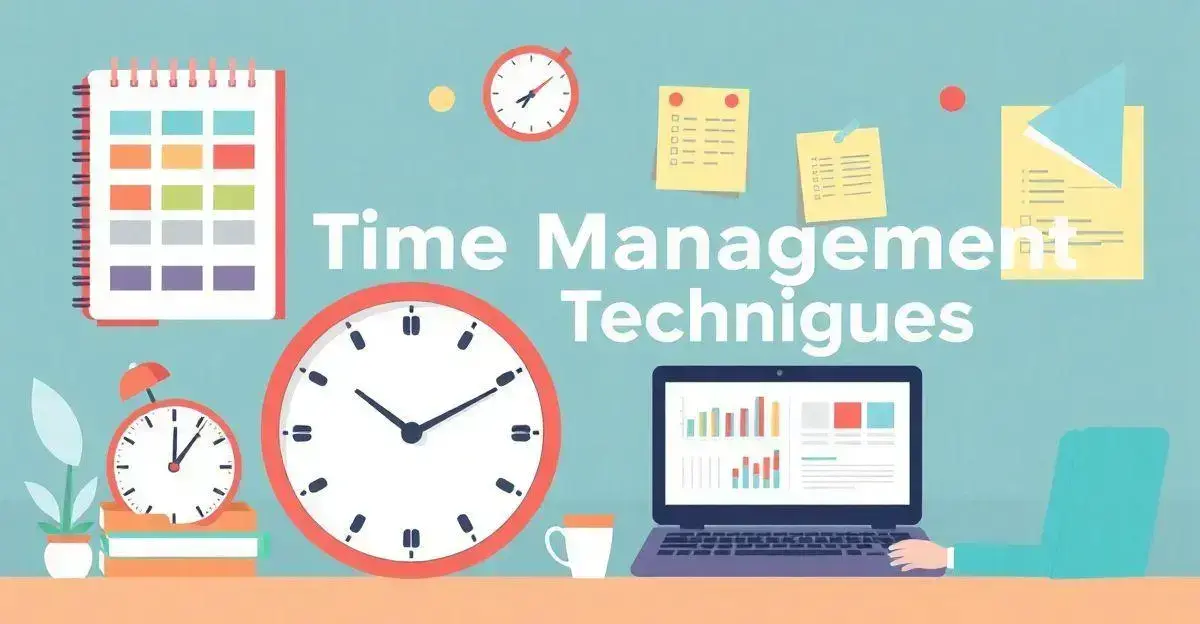Work-life balance strategies are crucial for improving overall well-being and productivity. In today’s fast-paced world, it’s easy for work to take over personal time, but achieving harmony between the two is essential. Finding the right balance can help you feel more fulfilled and less stressed.
By setting boundaries and prioritizing tasks, you can manage your professional and personal life more effectively. Implementing small changes, like scheduling time for self-care or delegating tasks, can make a huge difference. These simple adjustments lead to a healthier and more productive lifestyle.
Are you ready to start balancing your work and personal life better? Keep reading for practical tips and strategies that can help you take control and thrive in both areas.
Understanding Work-Life Balance
Understanding work-life balance strategies is crucial for maintaining mental health and productivity. It involves recognizing the boundaries between your professional responsibilities and personal life. By setting clear limits, you can find time for family, friends, and self-care, contributing to a happier, healthier lifestyle.
One of the key components of achieving this balance is effective time management. This means prioritizing tasks properly so that you can focus on what is most important. It helps to create a schedule that respects both work obligations and personal time.
Additionally, considering self-care practices is essential. These can include anything from regular exercise and mindfulness to taking breaks throughout the workday to recharge your mind. By investing in yourself, you will be more capable of handling work demands without feeling overwhelmed.
Ultimately, developing a deeper understanding of work-life balance can lead to a more fulfilling life. By recognizing the importance of this balance, you empower yourself to create a lifestyle that values both your career and personal well-being.
The Importance of Setting Boundaries

Setting boundaries is essential for ensuring proper work-life balance strategies. By establishing clear limits between work and personal life, individuals can reduce stress and improve their overall well-being.
One of the main reasons for setting boundaries is to protect your personal time. This includes time spent with family, friends, and on self-care activities. It is important to communicate these boundaries to colleagues and supervisors, as it fosters a culture of respect and understanding.
Another important aspect is learning to say no when necessary. Often, people feel pressured to take on additional tasks that may disrupt their balance. By practicing assertiveness, you can decline extra work that will negatively impact your personal life.
Additionally, creating a dedicated workspace can help reinforce these boundaries. When you designate certain areas of your home for work, it allows for a clearer separation between your job and your personal life. This physical division can lead to better focus and productivity during work hours, while also allowing you to switch off after your day is done.
In conclusion, recognizing the importance of setting boundaries will empower you to maintain a healthy work-life balance, resulting in improved mental health and job satisfaction.
Strategies for Achieving Work-Life Balance
Work-life balance strategies are essential for maintaining personal happiness and professional productivity. One effective approach is prioritizing tasks based on urgency and importance. Begin each week by listing your responsibilities and highlighting the most crucial ones. This helps you focus on high-impact tasks and reduces feelings of overwhelm.
Another significant strategy is implementing a structured daily routine. Establishing a schedule allows you to allocate specific time blocks for work and personal activities. Make sure to include breaks to recharge, which can dramatically improve focus and creativity.
Additionally, consider practicing mindfulness and relaxation techniques. Taking a few minutes each day for meditation or deep-breathing exercises can significantly enhance your mental clarity and emotional well-being. By incorporating relaxation practices, you set the stage for achieving greater balance.
Utilizing technology wisely is also a key factor. Tools like calendar apps and productivity trackers can help manage your time more efficiently, ensuring that you stay on track with both work commitments and personal life activities. But remember, it’s crucial to unplug after work hours to maintain the divide between professional and personal spaces.
Lastly, communicate openly with your family and employers about your needs. When everyone is aware of your boundaries and commitments, it fosters a supportive environment that encourages a healthier work-life blend.
Time Management Techniques

Work-life balance strategies play a crucial role in achieving a successful work-life balance. By mastering these techniques, you can ensure that both your professional and personal life receive the attention they deserve.
One effective method is the Pomodoro Technique. This involves working in focused intervals, usually 25 minutes, followed by a short break. This approach not only improves concentration but also prevents burnout.
Another valuable technique is setting SMART goals—Specific, Measurable, Achievable, Relevant, and Time-bound. When you define your goals clearly, you create a roadmap for your daily tasks. This can lead to better productivity and a sense of accomplishment.
Additionally, using a digital calendar or planner helps you organize your time efficiently. Schedule your work tasks and personal commitments, ensuring you leave gaps for unexpected events. This flexibility is essential for maintaining balance.
Furthermore, try batching similar tasks together. For example, if you have several emails to send, do them in one sitting rather than spreading them throughout the day. This method reduces task-switching and enhances overall efficiency.
Lastly, don’t forget the importance of regular reviewing. At the end of each week, assess what worked well and what didn’t. This reflection helps you tweak your strategies for better time management and overall balance.
Leveraging Technology for Balance
Leveraging technology is vital for achieving better work-life balance strategies. Various tools can help manage your time and tasks efficiently. One effective option is using calendar apps. These applications allow you to schedule both work and personal activities. Setting reminders helps ensure you don’t miss important commitments.
Another useful tool is task management software. Programs like Trello or Asana enable you to organize tasks by priority and category. By visualizing your workload, you’re more likely to stay on track and reduce stress.
Furthermore, utilizing cloud storage solutions simplifies sharing and accessing documents. This convenience ensures that you can work from anywhere, making it easier to balance professional and personal needs.
Video conferencing software is also essential for remote communication. Programs like Zoom or Microsoft Teams can save time on travel and allow you to connect with colleagues efficiently. This flexibility can contribute to a healthier work-life blend.
Don’t overlook the importance of wellness apps too. Many provide reminders for taking breaks, practicing mindfulness, or even engaging in short workouts throughout the day. Taking time to recharge is important for maintaining productivity and well-being.
Creating a Supportive Work Environment

Creating a supportive work environment is essential for enhancing employee satisfaction and productivity. A positive atmosphere encourages collaboration and fosters team spirit. Start by promoting open communication among team members. When employees feel comfortable sharing ideas and concerns, it leads to better problem-solving and innovation.
Another key aspect is recognizing employee achievements. Celebrate both small and large accomplishments, which boosts morale and encourages a culture of appreciation. Acknowledgment can be as simple as a shout-out during team meetings or more formal awards, contributing to the overall work-life balance strategies in the workplace.
Additionally, offering flexibility in work hours or remote work options allows employees to manage their personal and professional lives more effectively. This flexibility can significantly reduce stress and increase job satisfaction.
Providing resources for mental health, such as access to counseling services or wellness programs, is also vital. Showing that the company cares about its employees’ well-being creates a loyal and dedicated workforce.
Finally, fostering a culture of team-building activities helps strengthen relationships within the workplace. Encouraging participation in events, whether virtual or in-person, helps build trust and camaraderie among staff, thus creating a more supportive environment.
Evaluating Your Progress
Evaluating your progress is an essential step in achieving work-life balance. Regularly reviewing your routines and strategies helps you understand what works for you and what doesn’t. Start by scheduling time each week to reflect on your goals and accomplishments.
One effective method is to keep a journal. Document your activities and feelings regarding work and personal life. This can reveal patterns in your behavior, helping identify stressors or time wasters. Recognizing these areas allows you to make necessary adjustments to your routine.
Additionally, consider using performance metrics to assess your productivity. This could include tracking completed tasks, hours worked, or personal milestones achieved. By quantifying your efforts, you can gain insights into your efficiency and effectiveness, fine-tuning your work-life balance strategies.
It is also helpful to solicit feedback from family, friends, or coworkers. They can provide an outside perspective on your work-life balance. Understanding how others perceive your efforts can guide you to make better choices.
Finally, don’t forget to celebrate your achievements, no matter how small. Acknowledging your progress boosts motivation and reinforces positive behaviors. Remember, evaluating your progress is an ongoing process that helps you stay aligned with your goals and supports your work-life balance strategies.
Frequently Asked Questions about Work-life Balance Strategies
What are effective strategies for maintaining work-life balance?
Effective strategies include setting boundaries, prioritizing tasks, and practicing self-care to ensure time for both work and personal life.
How can technology assist in achieving work-life balance?
Technology helps by offering tools for task management, scheduling, and communication, making it easier to manage responsibilities.
Why is setting boundaries important?
Setting boundaries prevents work from encroaching on personal time and helps maintain mental health and productivity.
How can I evaluate my work-life balance progress?
You can evaluate progress by keeping a journal, tracking your tasks, and reflecting on your feelings about work and life.
What role does a supportive work environment play in work-life balance?
A supportive environment promotes open communication and recognition, which helps employees manage their work and personal commitments better.
What should I do if I feel overwhelmed at work?
If overwhelmed, consider discussing your workload with your supervisor, adjusting deadlines, or implementing stress relief techniques.